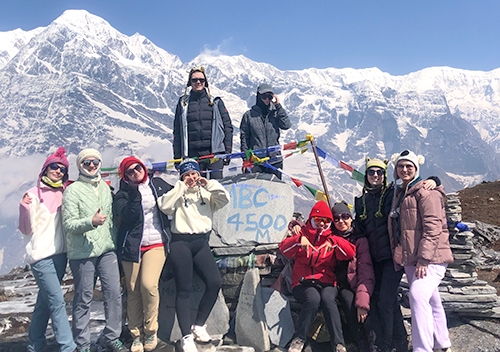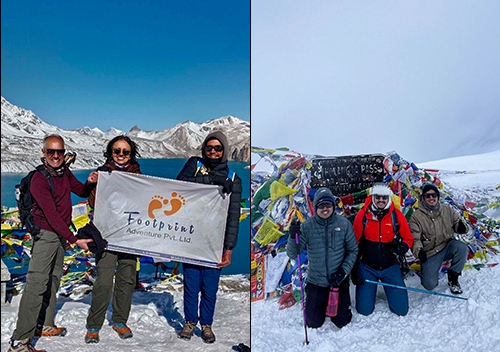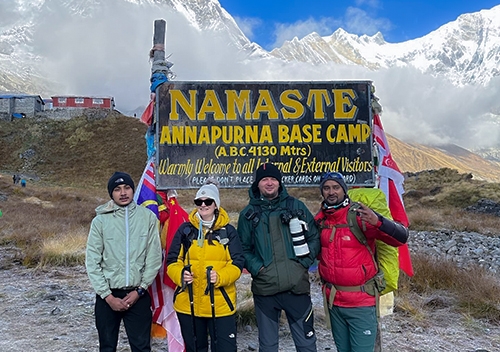Overview of Nar Phu Valley Trek
The Nar Phu Valley Trek is one of the most popular and quiet hiking trails in the Annapurna region. The Kang La Pass Trek itinerary offers beautiful views of the Himlung, Tilicho, Annapurna III, Gangapurna, Manaslu, and Saribung peaks, but it is more difficult to cross and has smaller pathways than any other mountain passes in Nepal. This walk provides a view of a place with unspoiled beauty and Tibetan culture that dates back to a bygone era that Tibet itself has long ago bypassed. The late king Mahendra opened the Kang La Pass Trek to trekkers in the Nar Phu valley in 2002. The trailhead for the hikes is located in Koto, and it travels all the way to the villages of the Nar Phu Valley. When people go trekking in the Nar Phu Valley, they get a real Himalayan wilderness experience that is just as memorable as it is beautiful.
Nar Phu is a real treasure because it gives hikers a rare chance to explore pristine valleys with a mix of wild Himalayan nature, ancient Buddhist culture, and Khampa settlement. It is tucked between the more-traveled regions of Annapurna and Manaslu. As you travel through the Nar and Phu valleys, you will see high mountains and passes, glaciers, isolated villages, tight gorges, beautiful forests, amazing rock formations, yaks, gompas, and Tibetan ethnic cultures that are very different from those of other countries. These practically undiscovered towns were off-limits to trekkers until the end of 2002, so only a very small number of people from the outside world have been able to explore them or climb any of the numerous 7,000-meter peaks that surround them.
After leaving Besisahar, which is where the Annapurna Circuit Trek usually starts, the trail quickly leaves the more popular paths and heads into the quiet Nar and Phu valleys. This is one of the highlights of the Nar Phu trek. You will have the opportunity to hang out with people in Phu as they go about their daily routines, as well as spend the night in the Nar Phedi monastery, as you make your way through deep canyons and gorges, passing beautiful Tibetan Chortens and prayer stones along the way. These are wonderful opportunities to gain insight into everyday life in Nepal's highland regions. If you think you have what it takes, another option is to make the ascent to the Himlung Himal Base Camp on foot. The last couple of days of the hike take you over the high Kang La Pass (5,320 m) and back down to Ngawal, which is a popular stop on the main Annapurna Circuit route and gives you a chance to feel "at home" again. On the last part of the trip, just before getting back in the truck and heading back to Besisahar, the landscape gets gradually greener and more fruitful.
Travelers can experience Tibetan culture and the grandeur of the Annapurna Himalayas on the Kang La Pass Trek. As you can complete Meso Kanta Pass (5,099m) from here, this trek is also known as the Annapurna Two Passes Trek. This Restricted Area Trek takes you through the two Bhotia villages of Nar and Phu in the Trans-Himalayas, revealing the true nature and culture of the Manang area. The Annapurna Circuit Trek and Nar Phu Valley are connected through the Kang La Pass (5,306 m).
Highlights of the Nar Phu Valley Trek
- Tilicho Peak, Annapurna II, Annapurna IV, Pisang Peak, Kanguru, and Gangapurna are all available for your viewing pleasure
- You can also spend the day in Pokhara, Nepal's most popular tourist destination
- Take a trip to the illustrious Tashi Lhakhang Gompa
- Explore Annapurna's most isolated region
- Spend your time in historic towns that haven't changed much over the centuries
- Spend some time in a region of the Tibetan plateau that stretches down into Nepal
- Experience the lifestyles of monks at Satek Gompa (Nar Phedi)
- Explore a distant region of Nepal that very few tourists ever get the chance to see
- Experience a culture that derives from Tibet, complete with prayer stones that are one-of-a-kind and colorful monasteries
Major Highlights of the Nar Phu Valley Trek
Kangla Pass (5,306m)
Kangla Pass is the highest elevation on the Nar Phu Valley trek at 5,306 meters. To connect Narphu Valley with the Annapurna Circuit and the Manang Valley, trekkers must cross this steep and high mountain pass. The pass provides a panoramic 360-degree view of the surrounding Himalayan peaks such as Annapurna, Dhaulagiri, and Manaslu. Due to its altitude, crossing Kang La Pass demands good fitness and proper acclimatization. It is part of the trek that provides a good physical challenge along with wonderful mountain scenery.
Hidden Himalayan Villages of Nar and Phu
Nar (4150m) and Phu( 4,050m) are isolated Tibetan-influenced places in the Narphu Valley of Nepal. Nar and Phu remain largely unaffected by modern development and keep the ancient Tibetan Buddhist culture, traditions, and language alive. Trekkers who travel into Nar and Phu experience local life that has not changed for centuries, visit ancient monasteries and chortens, and admire the stone houses that look as if they are 300 years old. Nar and Phu are hidden villages in Nepal that offer a rare opportunity to experience a style of life that has changed little for centuries, and bring greater cultural depth to your trek.
Is This Trip the Right Choice For You?
The Nar Phu Valley trek is appropriate for trekkers with a good level of physical fitness who are capable of walking from 5–7 hours a day over rough, elevated trails. This trek is for trekkers who want a remote experience, away from crowds, who are passionate about Tibetan culture and the dramatic scenery of the Himalayas, and who enjoy strenuous hiking, adventure, and off-the-beaten-path exploration. The trek is not suited for beginners, families with young children, or trekkers seeking comfort and convenience due to its basic accommodations and high-altitude trekking.
When is the Best Season to do the Nar Phu Valley Trek?
The trek to Nar Phu Valley is accessible throughout the year and can even be done during the rainy monsoon months of June through August, as well as during either of the two busiest times of year for tourists (March-May and September-November) is also considered the best season for the Nar Phu Valley Trek. Even though mudslides and landslides may block the roads to and from Besisahar in the highlands during the monsoon, the trip can still be fun at this time. The high pass may be blocked by snow during the winter months of December through February.
How Difficult is the Nar Phu Valley Trek and How Can I Prepare Myself for the Trek?
Nar Phu Valley Trekking is considered an intermediate-level Himalayan trek. For instance, on the very first day of this excursion, you will travel all the way from Kathmandu (1,400 m) to Koto (2,600 m). In spite of the high passes, the risk of suffering from altitude sickness is lower here than it is in other climbing destinations in Nepal. It is irrelevant to either one's age or state of health. In spite of this, our route gives you a lot of time to get used to the altitude. The most important thing is to take things slowly, drink enough water, and pay more attention to what your body is trying to tell you.
The Kang La Pass Trek Itinerary is an amazing alternate trail that you can take. You can skip the less picturesque sections and head straight to the nicest part of the path by using the motorable roads in between. The journey from Besisahar to Koto will be tiring because the road is not in the best shape, but it will be worthwhile once you get there.
Why Choose Footprint Adventure for the Narphu Valley Trek?
If you plan on trekking to Nar Phu Valley, we at Footprint Adventure guarantee safe, smooth, and unforgettable trekking experiences. We provide safe and well-structured trips, led by experienced and government-certified guides, and we ensure your safety, comfort, and amazing trekking experience. We provide flexible itineraries, best price guarantee, and personalized services to suit your needs. We are a responsible tour operator who supports the local people and operates sustainably when travelling. Our exceedingly high success and good reviews show our accountability to quality and customer satisfaction. With Footprint Adventure, you will receive dependability, professional support, and a quality trekking experience that is meaningful in Nepal. Contact us for more information.






















